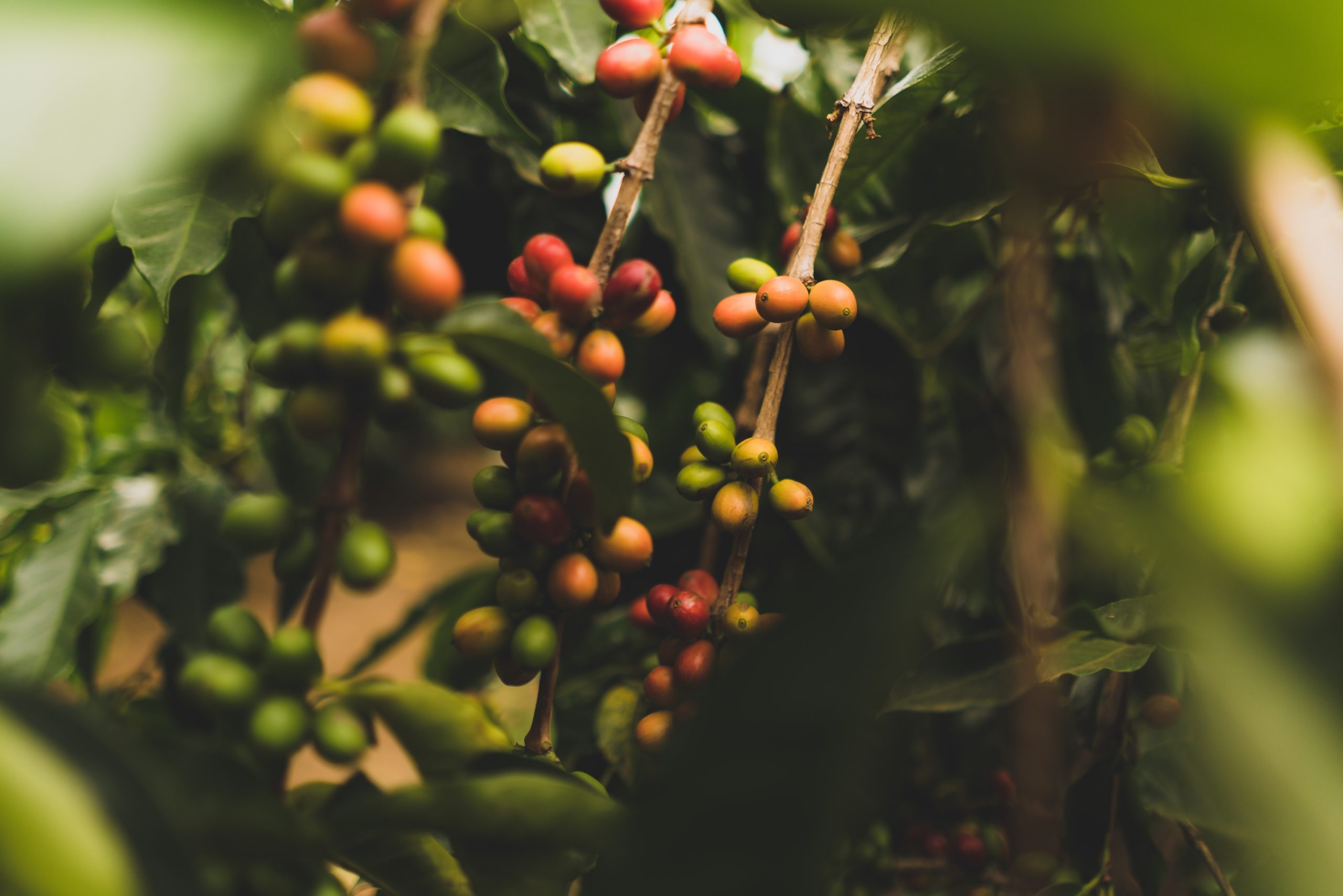Want to know what shade-grown coffee is? You've come to the right place.
We'll tell you what kind of coffee it is and why avid coffee drinkers should buy it.
Let's get started.
What Is Shade-Grown Coffee?

It's coffee that is grown in the shade of taller plants and trees that surround the coffee trees.
Shade-grown coffee beans are usually cultivated in Ethiopia, Mexico, Honduras, Guatemala, and Nicaragua.
The coffee berries are larger and ripen more evenly, which gives shade-grown coffee a flavor advantage over non-shade-grown coffees. But because maturation takes place more slowly in shade than in direct sunlight, this coffee is more difficult to grow.
We'll talk in more detail about the differences between these two methods of growing coffee below.
Shade-Grown Coffee vs Sun-Grown Coffee
There are two ways to grow coffee beans—in direct sunlight and in the shade of trees.
Let's take a look at each method and find out how they differ and how they affect the taste of the drink.
Sun-Grown Coffee
Beans are grown in direct sunlight on coffee farms in Brazil, Costa Rica, Kenya, and parts of Colombia.
The advantage of the sun-grown method is that it makes it possible to grow coffee on large plantations where automatic harvesting is available. Plus, coffee berries ripen faster in the sunlight. Overall, the farmer gets a bigger harvest and reduces labor costs associated with harvesting.
The cost of the finished product when using the sun-grown method of coffee production is lower, but sun-grown coffee often doesn't taste as good as shade-grown coffee.
Coffee plants that receive direct sunlight have a shorter life cycle than those that grown in the shade. Direct sunlight and mechanical treatments can damage coffee trees.
Coffee cultivation on large, sunny farms is also harmful to the environment. For the sake of open plantations, forests are cut down. And sun-grown coffee trees require more nutrients, so coffee farmers have to use more fertilizers to get a good harvest. Finally, because there are fewer birds on sunny plantations than shady plantations, farmers must turn to pesticides to combat insects.
Shade-Grown Coffee
Shade-grown coffee is cultivated using a more sustainable method.
This method helps conserve forests because it relies on trees and because the trees' fallen leaves serve as organic fertilizer.
Also, birds settle on the trees of shady coffee farms and eat insects, which reduces the need for pesticides.
Shade-grown coffee takes longer to mature and is harvested by hand. This explains its higher cost.
Shade-grown coffee also tastes more complex than sun-grown coffee because the berries ripen more slowly. This way they store more nutrients, resulting in a denser body with an intense taste.
The trees that provide shade for growing coffee can also produce fruit. This can be an additional source of income for farmers.
But the shade-grown coffee production method also has disadvantages for coffee farmers.
Due to the slow ripening of the berries, more work is needed during the harvest, and this may not always be justified in terms of profit. Also, shade-grown coffee farms have a lower yield than sun-grown coffee farms. In addition, automatic harvesting isn't possible on shade-grown coffee farms—the beans must always be hand-picked.
Types of Shade-Grown Coffee Farms
Shade-grown coffee farms are divided into several types according to the kind of shade in which the coffee trees grow.
Rustic
Usually, these are small family plots located in the forest. Coffee bushes replace the lower layers of the forest.
The level of shade in such areas is approximately 70–100%.
With this type of cultivation, farmers do not need chemicals, and plantation maintenance is minimal.
This method does not require large financial investments, but the harvest will be small.
Traditional Polyculture
On this type of coffee plantation, there are forest trees and fruit trees, and vegetables and medicinal plants often grow.
The level of shade is generally 60–90%.
Commercial Polyculture
Here, the shade is created by fruit and berry trees, as well as by ordinary trees. A large number of coffee trees are planted.
The shade level on such farms is 30–60%.
Shaded Monoculture
On these plantations, the shade level is about 10–30%. In addition to coffee trees, there are also felled trees.
Benefits of Shade-Grown Coffee Beans
As we said above, shade-grown coffee has benefits for consumers, farmers, and the environment.
Let's take a closer look at these benefits.
Taste
The longer the coffee matures, the more complex the taste of the beans will be.
More organic acids accumulate in the berry, and the beans become denser.
When brewed, this coffee will be more acidic and aromatic than coffee brewed with beans that have matured quickly.
Chemical-Free Pest Control
Shade-grown coffee does not need to be treated with fertilizers or pesticides.
The fallen leaves of shade trees serve as fertilizer, and birds are a natural predator of insect pests.
This saves farmers money, which is especially important in poor regions.
Bird Friendly
Birds can only live in areas where there are other plants besides coffee plants. On shaded coffee plantations, birds' natural habitat is preserved.
These plantations not only have more birds, but also more bird species.
Planting new trees provides a natural habitat for birds, thus increasing their influence on insect regulation and maintaining the balance of the tropical ecosystem.
Environmentally Friendly
Shade-grown coffee is good for the environment.
It doesn't require deforestation—trees are preserved and the ecosystem is not disturbed.
Additionally, shade trees protect the soil from erosion and nutrient depletion. The trees also recycle carbon dioxide.
The soil receives organic nutrients from fallen leaves. When leaves fall from the shade trees, a powerful humus layer that's rich in nitrogen and trace elements develops.
Best Shade-Grown Coffee Origins
If you want to try shade-grown coffee, then start with coffee from countries like Guatemala, Nicaragua, or Honduras.
Guatemala
There are many shade-grown coffee farms in this country. Guatemala's climate is favorable for growing coffee beans.
The taste of Guatemalan coffee is balanced and harmonious, with acidity and the bright aromas of fruits, flowers, and spices.
And because the soil is rich in minerals and contains volcanic ash, a slight note of smoke is found in the taste of drinks brewed with Guatemalan coffee beans.
Nicaragua
Only Arabica coffee is grown in Nicaragua.
Most Nicaraguan plantations use the shade-grown method.
Compared to coffee from other Central American countries, Nicaraguan coffee is less acidic and is most often processed using the expensive wet method.
It is characterized by a medium body, clean acidity, and balanced sweetish flavor profile with notes of vanilla, caramel, and citrus.
Honduras
In Honduras, coffee farmers grow coffee trees interspersed with other fruit and berry plants.
Coffee from Honduras has a full body, sweet and soft profile, and balanced acidity.
You can taste notes of vanilla, nuts, and tropical fruits.
Conclusion
Shade-grown coffee has a more complex and interesting taste than sun-grown coffee due to slower maturation.
As an added benefit, this growing method is environmentally friendly.
It does not require deforestation, and it eliminates the need for chemical fertilizers and pesticides.
